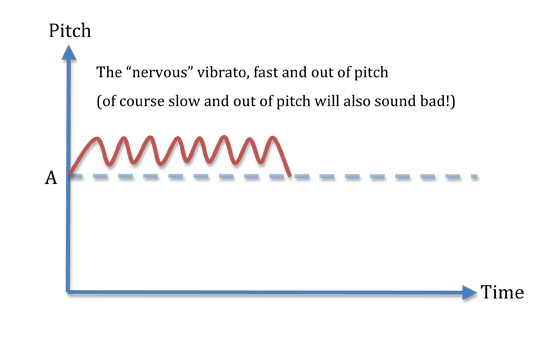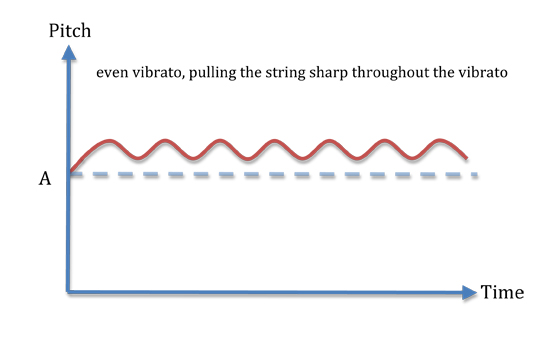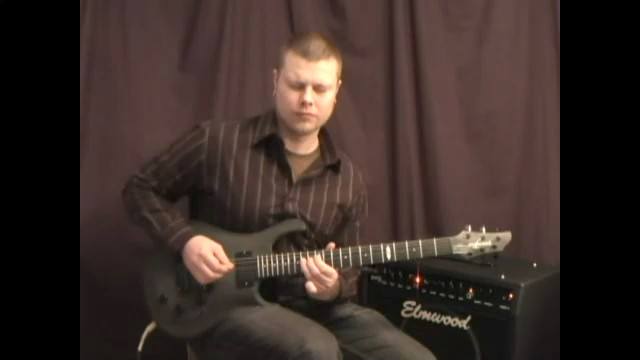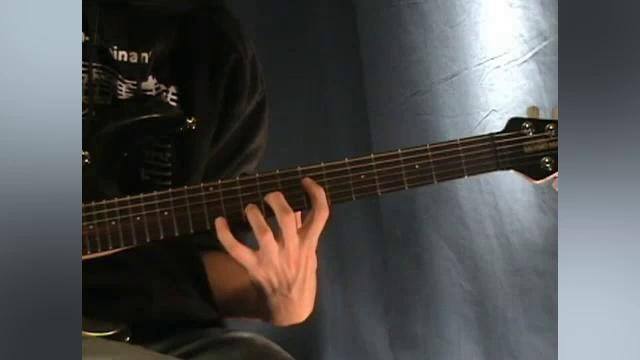Welcome to this tutorial on Vibrato!
In this video I've put emphasis on the "show & tell" principle rather than tons of text for you to read, and enforced my video examples with the graphs below. So I won't be ranting too much in the text in this tutorial, but rather encourage you to watch it through.
However, some words might of course be in order. For the first thing vibrato is actually (as I'm sure most of you are aware of) just smaller (and faster) bends played in sequence after one another, creating a wavering motion going up and back to the original pitch. On a guitar, most of us would associate vibrato with raising the pitch (but exacting force on the string, pulling or pushing it away and above the original pitch).
In the first example below, we have sort of an "idealized" vibrato if you may, with the pitch wavering upwards and back to pitch in a steady motion. This creates a controlled vibrato, and will sound and feel appealing to the listener (as well as you hopefully).
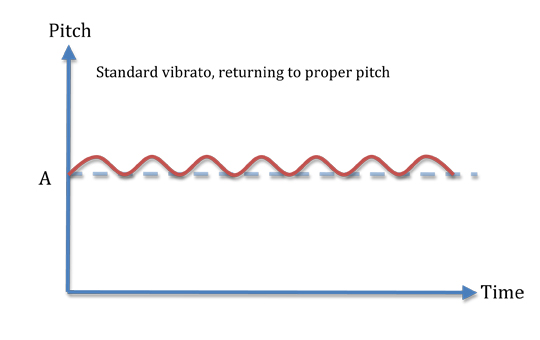
In this second graphs however, I have illustrated a common beginner's mistake or "affliction" rather. The lack of muscle control, and or technique, will force the bent pitch to waver unevenly back and forth from the starting pitch, and is often also unrhythmical. Remember always, that even though your vibrato is not "on-beat" note value-wise, each vibrato raise and fall should be in sync with each other, to create a smooth even vibrato. This is true on ANY instrument, be is stringed, horn, or even the human voice.
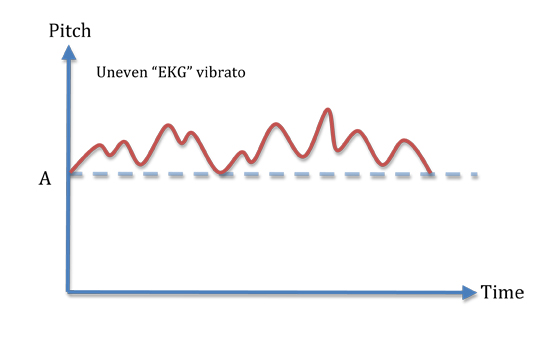
Then we also have the "fidget/nervous" vibrato, which is VERY common. This means that the player pulls the string slightly out of "starting pitch" whilst doing vibrato, which means that he/she is not returning the pitch to zero. This will will sound VERY out of tune, and is to avoided at all costs. The most common reason for this is the use combination of thin strings and lack of control. Actually, even a slow and even vibrato that IF in pitch would sound great will sound horrible if pulled out of pitch (last diagram).
